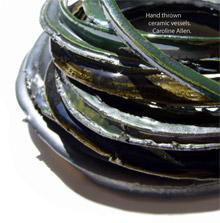Nona Palincaş (New Europe College Fellow, Vasile Pârvan Institute of Archaeology, Bucharest)
Creativity and replication of inherited tradition coexist in all societies. Social contexts favour one over the other to various degrees but even when creativity is particularly favoured it is to be expected that social groups participate in the process in different ways and, more importantly, to various degrees. As pottery is one of those categories of material culture that most probably was used by all people in Bronze Age societies, investigating creativity through it might shed some light on what triggered creativity in this domain, how various social groups participated in this process, and with what consequences. This talk will try to answer these questions by means of a case study – that of the Wietenberg pottery, attributed to the culture with the same name, distributed in Transylvania in the Middle Bronze Age (ca. 2000-1500 B.C.E.). From among the various possible creative approaches to pottery the discussion will be confined to the creation of this pottery’s decoration style.
The issue of the origin of the Wietenberg decorative style has been debated for decades, and is still being debated today, owing to its relevance to the assessment of the impact of Aegean contacts on the societies in the study-region.
Wietenberg pottery decoration is almost entirely geometric. It became the subject of debate on account of its main feature, which is referred to by the generic term of ‘spiral decoration’. Several scholars believed this style to have parallels – albeit only a few − in the Aegean, and because various objects – for example, harness pieces, Mycenaean swords, ox-hide ingots – of Aegean (mainly Mycenaean) origin appeared in Transylvania at the same time, they argued that the spiral decoration style emerged under ‘Aegean influence’. Other scholars dissociated the objects of Aegean origin from the spiral decoration style on the grounds that, in some of its details, the latter’s appearance differed from the Aegean spiral decoration, and thus argued in favour of a local, non-Aegean origin for the spiral decoration. The relevance of this debate stems from the fact that to reject or accept the Aegean origin of this decorative style amounts to either a dramatic restriction or a dramatic extension of the scale of the ‘Aegean influence’. Rejection of the ‘Aegean origin’ implies the limiting of the consequences of the Aegean contacts to a few war-related (swords and harness pieces) ‘imported’ items scattered over confined regions. Its acceptance implies extending its consequences to other main categories of material culture (like pottery and hearths), including those of local tradition (e.g. battle axes). In short, in the first case the ‘Aegean influence’ is limited to a small category of people, while in the second it includes large sections, if not all, of the communities in questions.
However, this discussion has remained deadlocked because it is conceptualized in terms of close resemblance vs. general resemblance, where general resemblance is considered irrelevant for the ‘Aegean influence’ by opponents of the Aegean origin of the spiral decoration style. Introducing to the discussion the idea of creativity could shed new light on the emergence of the Wietenberg pottery decoration style. For this purpose, creativity will be considered at two levels: that of the degrees of alteration of the prototype motifs as degrees of creativity and that of creative integration of various prototypes – Aegean or otherwise – and their derivatives within the same product. Because this second level links pottery decoration to various domains – foreign and local; cosmology and warfare; the mortuary and the living, etc. –, the Wietenberg pottery decorative style can be seen as having resulted from the interactions of potters and various categories of users. This in turn can provide insight into what drew various social groups in the study-area to participation in this creative process, how they participated in it and with what consequences.


